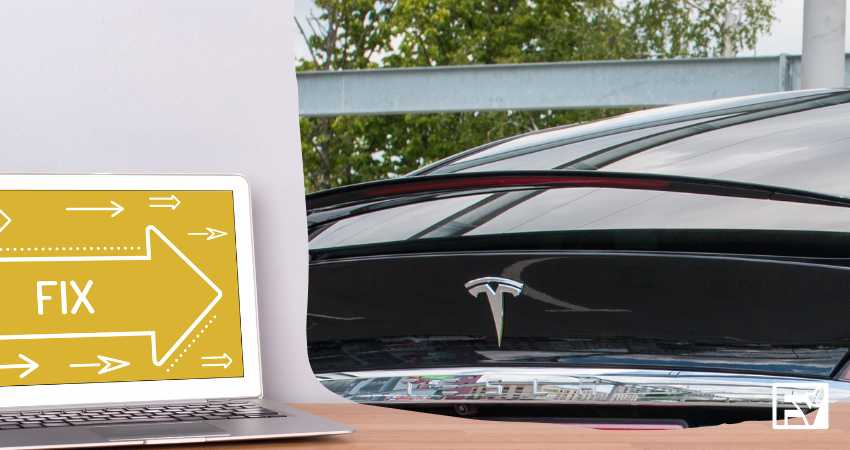Tesla has been in hot waters for several technical issues related to suspension, power steering, and the drive unit. The last one, in particular, does not bode well for the company since its drive units are the home to the most vital parts of an electric car. The company is, overall, heading in a positive direction, but the drivers must know what technical faults they should expect.
Your Tesla drive unit is causing issues due to faulty bearings, seal leakages, and vibrations. These issues can cause some problems, such as noise. If left untreated, the issues might eventually lead to the complete failure of the unit sooner or later.
Most Reported Problems in Tesla Drive Units
- Noises: Several Tesla Model S owners have reported the infamous milling and grinding noises. These sounds become more noticeable if the car is driven at low speeds. Some users have also reported a ‘clucking’ sound from the rear.
- Bad Sealings: The drive unit can damage its sophisticated components if water makes an ingress. Bad sealings are usually the culprit, but that only applies to older versions of Tesla. Like in the case of noises, this issue is also primarily associated with the Model S.
- Vibrations: Some loose wires can transmit vibrations into the drive unit as the car moves. The vibrations ultimately transmit to the car body.
Causes of Tesla Drive Unit Issues Explained

Noises
Noises occur in Tesla drive units due to faulty bearings. These, if left unaddressed, may get louder each passing day. Some users have also reported a complete breakdown of the drive units after a few thousand kilometers into the noise; however, by and large, they are harmless and only annoying to the ears.
The original bearings of the units are metallic. High magnetic fields from the motor can eventually bend them. This deformation no longer makes them a perfect ‘fix’ for the drive unit assembly. The problems are mostly reported in older Tesla models.
Bad Sealing
Drive units can be affected by the rain or by flooded streets. The leaky seals around the drive unit can have catastrophic impacts on the drive unit, which can lead to complete failure—not to mention, the drive unit is the house to the most critical components in an electric car after the battery, namely, the electric motor, power electronics, and the gearbox.
The issue had been prominent in older Teslas. However, the newer ones are capable of tolerating such extreme events. Also, note that the drive units and batteries are sealed to restrict water entry and avoid current leakages and electrocution of the passengers—it is merely the moisture that makes the situation go worse.
Vibrations
Wires and cables can become loose enough to stoop down, touch the drive unit assembly, and transmit vibrations. However, note that it is not the problem of the drive unit itself, nor is it damaging. It occurs merely because of the positioning of the wires concerning the drive unit assembly. As the speed of the car increases, more vibrations can be transmitted into the body.
Tesla Drive Unit Failure Symptoms
According to Tesla owners talking to different forums, noise is the most prominent sign occurring before the drive unit failure. These are the same as discussed above; however, it might take considerable time and mileage before noises eventually culminate into a complete breakage.
In case of water entry into the drive box, the car might become unresponsive after any critical component is damaged without showing any prior symptoms, such as noises.
Fixes for Tesla Drive Unit Issues
Noises
Contact a professional to fix this issue. It’s too complex for laymen to fix it. Tesla traditionally fixes this issue by replacing the metallic bearings.
However, note that there have been reports of persistent noises even after multiple replacements of the entire drive unit or some critical components.

Bad Sealing
Unfortunately, in the case of water ingress in the drive unit, it will need a replacement. However, you can avoid any such event in the first place by taking care of the sealants and keeping flooded paths at arm’s length.
Vibrations
The solution lies in harnessing the cables properly. According to Elon Musk, instead of replacing the drive unit, it is better to shim it. If we choose the former way, it will only halt the problem temporarily and will show up again as soon as the wires come into contact with the unit again.
To fix it, contact a mechanic to trace out which wire is responsible and get it harnessed.
Tesla Drive Unit Failure Rate
The Tesla Model S is very likely to suffer drive unit failures. According to a poll of 242 Tesla owners, most had replaced their car’s drive unit. 80% percent had it replaced only once, while 14 percent had it twice.
Other data shows that the failure rate is, in fact, 100 percent. The data displayed is about the cars driving the most miles; they all have their drive units swapped.
Note: polls are usually built on selection bias. The portion of people having drive unit replacements probably does not represent the larger population.
Tesla Drive Unit Fixing Cost
The solution to drive unit problems depends upon some factors. If the unit needs a replacement, it will cost you around $ 10,000. But if the unit is, by and large, and only some components need replacements, you can expect to pay less. Furthermore, if the problem is related to the loose wires, it will cost you a meager amount.

Much depends on the warranty, too. Tesla is offering a free replacement for the whole drive unit provided no more than eight years have passed since your car hit the roads. Another plus point is the waiver of the mileage restriction: you can claim the warranty regardless of how many miles your Tesla has been driven within that period. However, note that some parts of the drive unit do not fall under the warranty, and you will have to incur their cost if you only want to replace those instead of the whole unit. For instance, the seals do not fall under the warranty. It will cost you if you’re going to get new ones without replacing the drive unit.
Read: Tesla Keyless Driving: Can You Drive Tesla Without a Key?
Concluding Remarks: Why Is My Tesla Drive Unit Causing Issues?
Tesla drive unit issues emerge from manufacturing faults, including bad bearings, loose wires, and leaky sealants. If not resolved, the issues can culminate in the complete failure of the unit. Though the issue is very common in Tesla Model X older versions, it is rectifiable if shown to a professional before it is too late. Depending on the warranty life of your Tesla’s drive unit, you will either pay for the services or have it for free.
However, note that Tesla is making swift technological improvements to get rid of these issues soon. The company is already up to building a drive terrain that can last a million miles, taking the drive unit to a whole new level. In the future, we can expect to get rid of these problems.


